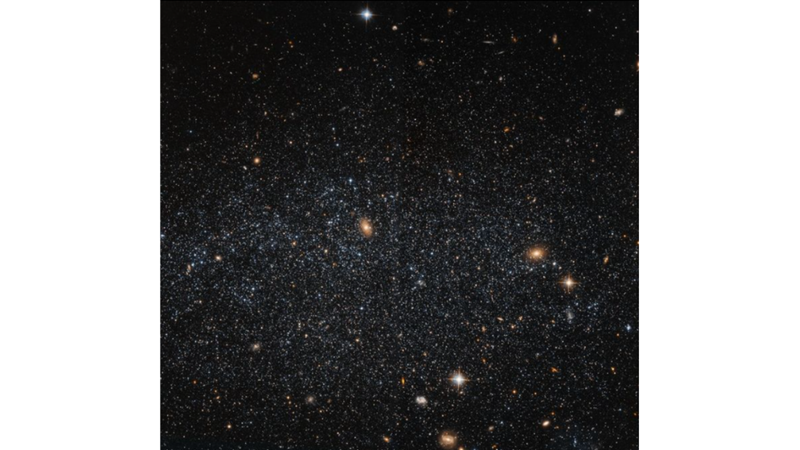Leo A
2.6 million light years
The Lion Constellation
This is one of the most isolated members of our ‘Local Group’ of galaxies. The open distribution of stars allows light from distant galaxies to shine through.
The data collected to create this newly released Hubble image came from four different observing programmes. Three of them investigated the star formation histories of nearby dwarf galaxies like this one, while the other tried to better determine the mass of our Local Group.
While most of Leo A's young stars are located in the centre of the galaxy, the number of older stars increases as we move outwards from the centre. This means that star formation here most likely took place either from the outside in, or that older stars managed to migrate to the outskirts of Leo A in the early stages of their evolution.
Image description:
A black background dotted with stars and distant galaxies. The distribution of stars increases towards the image centre, forming the loose oval shape of the irregular galaxy Leo A, which extends horizontally across the image. Three stars in the foreground shine brightly - one at the top of the centre, the other two in the lower right quadrant of the image. Each harbours four bright spines (called diffraction spikes) extending outward from the star.
Image credits:
NASA, ESA, A. del Pino Molina (CEFCA), K. Gilbert and R. van der Marel (STScI), A. Cole (University of Tasmania); Image Processing: Gladys Kober (NASA/Catholic University of America)


 Nielawore
Nielawore









Yorumlar
Interesting
Nice
Yorum yazmak için lütfen giriş yapınız